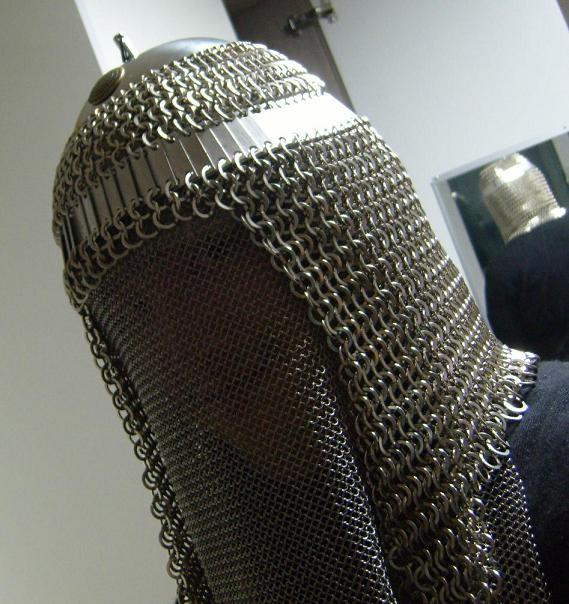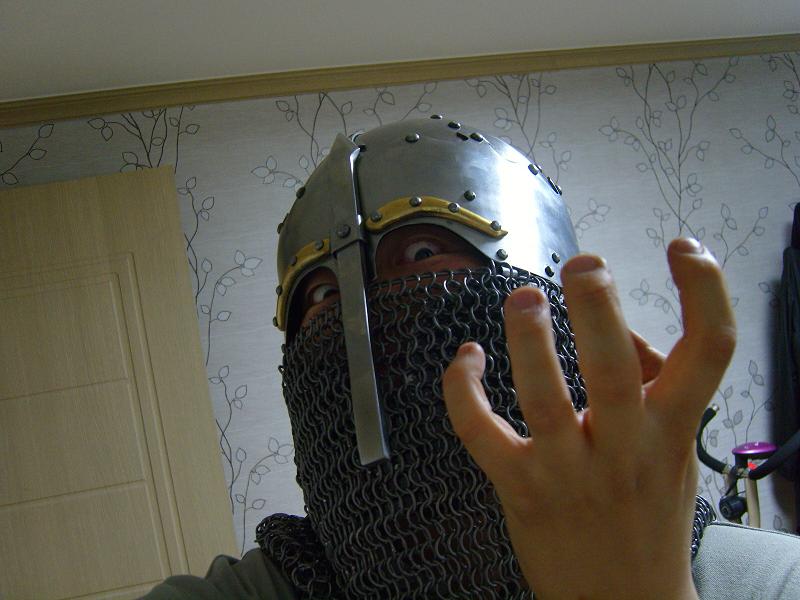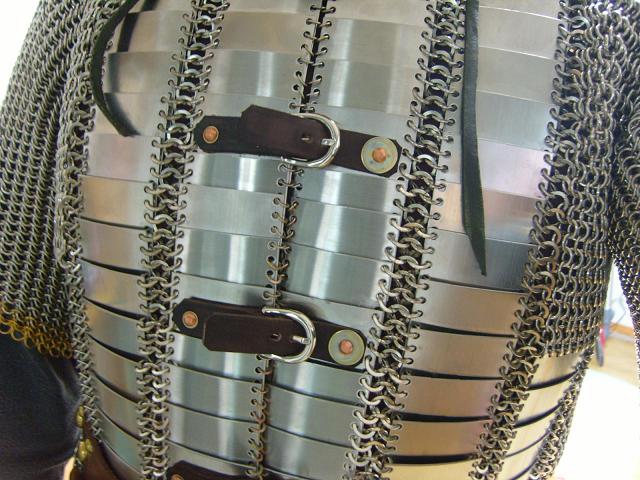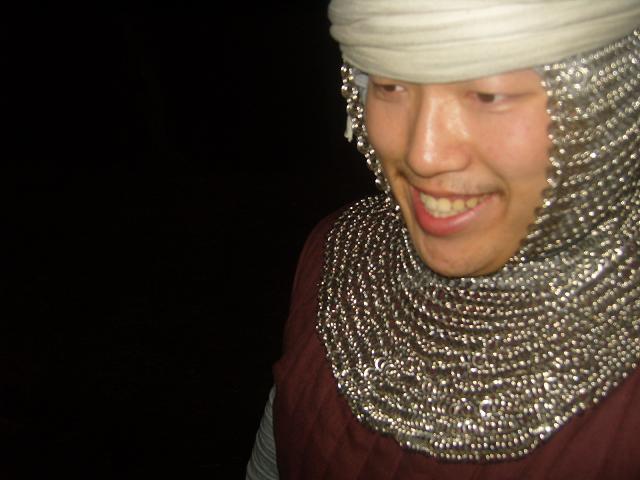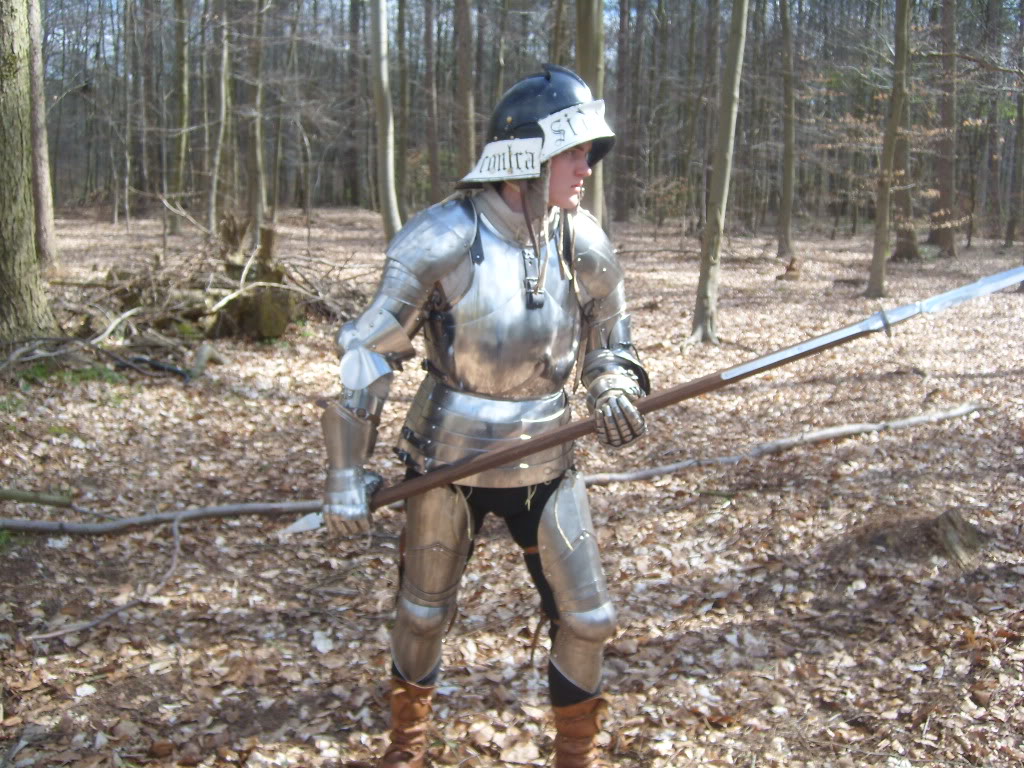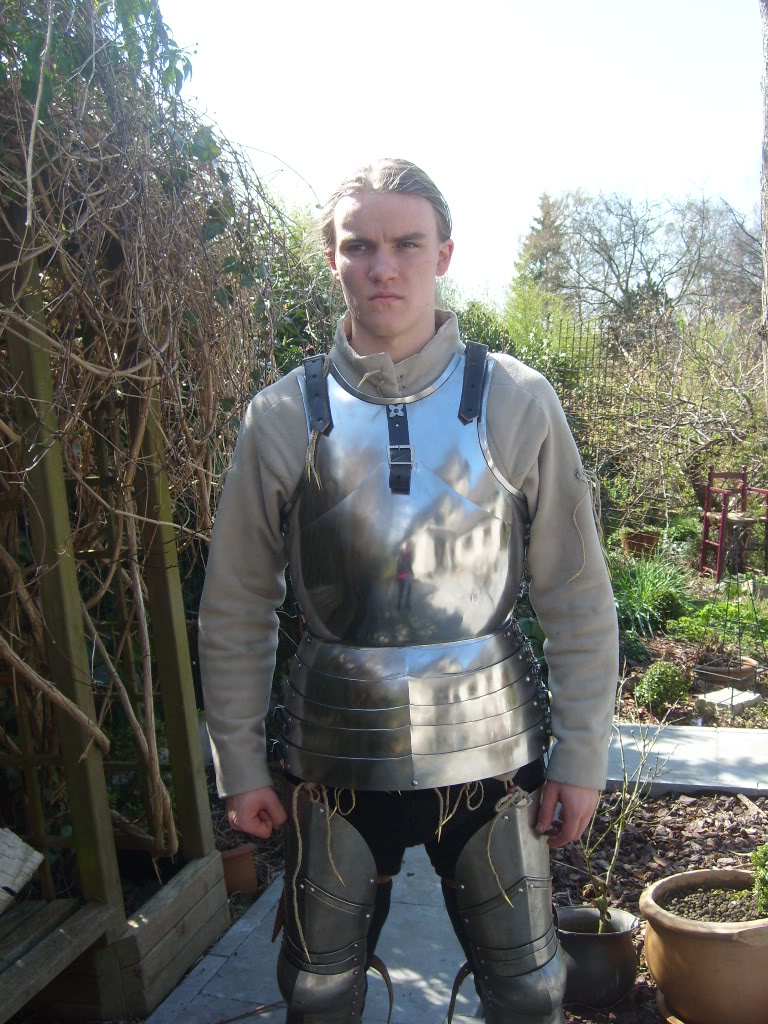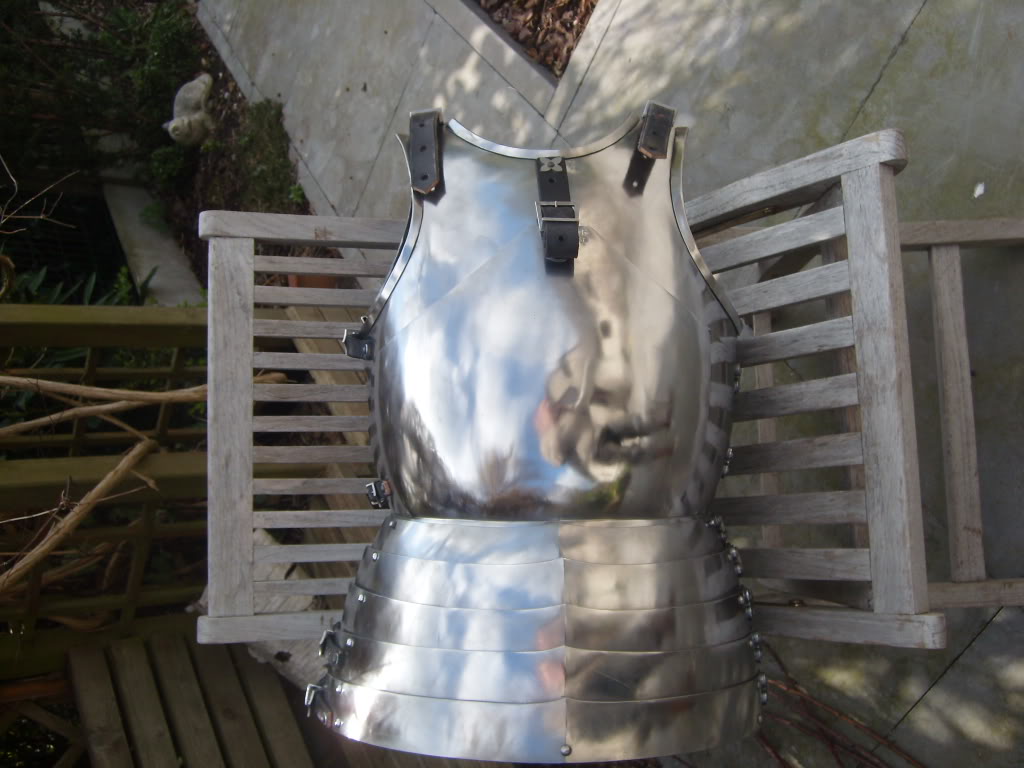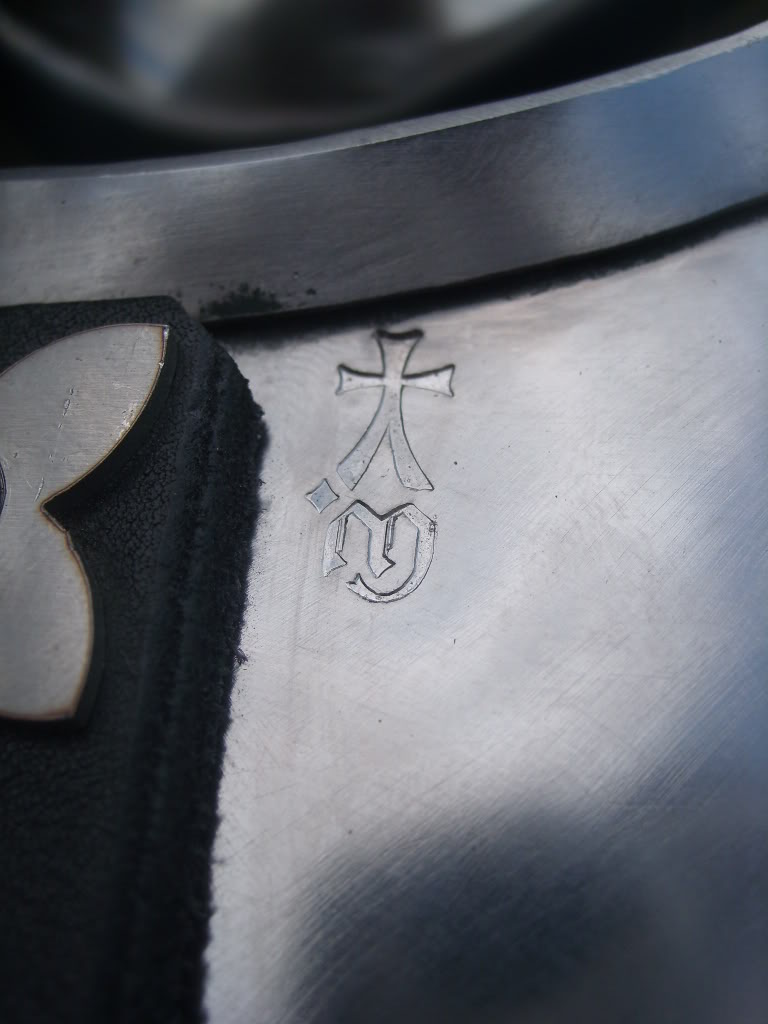Posts: 1,563 Location: Upstate NY
Wed 07 Apr, 2010 5:33 am
I don't know although most of the pics in the gallery are from Hermmans auctions. As I said i've seen several others including the one I got to handle personally that had a simple front and back plate gorget. Two of the other examples i've seen were displayed with bevor,
maille standard and simple gorget. The example I got to examine hands on the gorget has straps for attaching the large pauldrons to, so i've theorized that perhaps the purpose of the simple gorgets in these late harness ( they were all post 1485 ) was not defensive but the begning of the change to making the gorget the anchor point for shoulder and or arm defenses that would become pretty much the norm by 1510 rather than pointing, the reasons for this I can only guess at but perhaps it was founf to provide better stability for the shoulder defenses. The switch to attching shoulder defenses at the gorget rather than pointing was apparently complete by 1510 as most all fine plate harness that I can think of off the top of my head were using it ( see the afore mentioned Wladisla harness dated 1510 ) although by that time locking armets were common on harness and require a multi lame gorget to use as well.
As far as date of the harness pictured, I was left with a far different date impresion, not 16th century, but due to the lack of abundant fluting and file work but typical of Italian export work of the later 15th century. While composite is of course always possible and was done in period as well as later to construct harness for museums
http://www.myArmoury.com/albums/displayimage....fullsize=1 the fluting on the legs is rather subdued as on the rest of the harness so I will not rule out either option.
